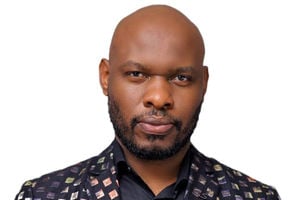We can end Great Divide between Roman Catholic, Orthodox churches

Pope Francis with Archbishop Ieronymos II of Athens and All Greece at the Apostolic Nunciature in Athens, Greece, on December 5. PHOTO | AFP
What you need to know:
- For more than 1,000 years, the Christian church was one. Then, in A.D. 1054, the Pope and the Patriarch of Constantinople excommunicated each other, creating what is called the Great Schism. The major Christian church separated into what became known as the Catholic Church in the west and the Orthodox Church in the east.
From December 4 to `6, 2021, Pope Francis made a second pilgrimage of reconciliation and peace to Greece and Cyprus, the stronghold of the Eastern Greek Orthodox Church.
The pilgrimage brings Christianity closer to unity. This message of hope is inherent in the current season of Advent.
For more than 1,000 years, the Christian church was one. Then, in A.D. 1054, the Pope and the Patriarch of Constantinople excommunicated each other, creating what is called the Great Schism. The major Christian church separated into what became known as the Catholic Church in the west and the Orthodox Church in the east.
Pope Francis has had close ties with the Ecumenical Patriarch of Constantinople, Bartholomew I, since becoming pope in 2013.
He is building upon the foundation of reconciliation and cooperation laid by Pope Saint John XXIII, who called for the Ecumenical Vatican Council II (1961-64), aimed at modernising the church and healing the divisions of Christianity.
Soon after closing the Council, Pope Saint Paul VI is said to have stunned the world by visiting the Holy Land in January 1964, and held a meeting with Athenagoras, the Ecumenical Patriarch of Constantinople.
The visit was termed an ecclesial embrace. It was followed by a joint Catholic-Orthodox declaration, concerning the Catholic-Orthodox exchange of excommunication of 1054.
In 2001, John Paul II became the first pope ever to visit Greece. His appeal at that time for forgiveness for historic wrongs committed by Catholics against Orthodox Christians helped to warm relations.
Spiritually and theologically, far more unites the Western and Eastern Churches than divides. Pope Francis emphasises that the journey toward full communion should respect the diverse traditions of the two Churches.
Both churches use a hierarchical form of church government: bishops, priests and deacons. In the Roman Catholic Church, the Bishop of Rome is called the Pope, and he is considered Christ’s representative as the head of the Church on earth.
The Eastern Orthodox Church is led by patriarchs, and each patriarch is the administrative head over the Orthodox Church in a given geographic region. These patriarchs are considered equals, with none having authority over another. The refusal of the Eastern Orthodox Church to defer to the will of the Bishop of Rome was a primary political factor in the Great Schism.
Roman Catholics and Orthodox agree on the doctrine of the Trinitarian nature of God. The Orthodox, however, reject the doctrine of the procession of the Holy Ghost from the Son as well as from the Father (“Filioque”), of the Nicene Creed. Both Churches honour Mary as the Mother of God. Both use icons in worship. But the Orthodox do not use statues.
The two churches differ on the meaning of Easter. For Roman Catholics, Jesus saved man from sin through his death by crucifixion. For the Orthodox, salvation is achieved by Christ’s triumph over death in the resurrection. Greek art doesn’t show the figure of the bleeding, crucified Christ. Orthodox cross themselves from right shoulder to left, Catholics from left to right.
There are seven sacraments in both the Roman Catholic and Eastern Orthodox churches. While the latter uses leavened bread for the Eucharist/holy communion, the former uses unleavened bread. The Eastern Orthodox Church believes that Jesus Christ is mystically present in communion, while the Roman Catholic Church believes that the bread and wine are transformed literally, but invisibly, into the Body and Blood of Jesus Christ.
The Greek Orthodox Bible has more books than the Catholic Bible; namely, Psalm 151 and 3 Maccabees.
A divided Church is a big scandal. It is like a broken marriage. Churches need to turn to God, the great healer, in response to the priestly prayer of Jesus Christ (John 17:21). St Paul exhorts Christians to “maintain the unity of the Spirit in the bond of peace (Ephesians 4:3).”
The writer is the director of Foyer de charity Retreat Centre Namugongo





